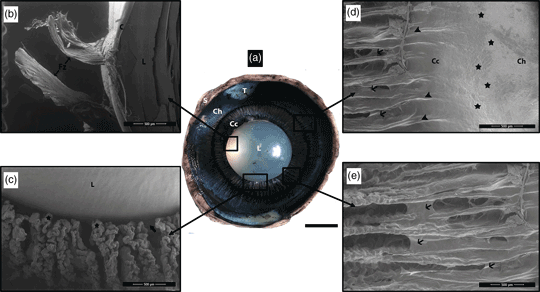No CrossRef data available.
Article contents
Morphological Aspects and Microscopic Analyses of Fibrous Tunic and Uveal Components in Bovine Eye
Published online by Cambridge University Press: 26 May 2022
Abstract

This study aimed to reveal the anatomical features of the bovine eye by scanning electron and light microscopic methods. For this purpose, a total of 40 eyes were evaluated. Gross and microscopic characteristics of the cornea, sclera, ciliary body, choroid, iris, and lens were determined. Bowman's and Descemet's membranes of the cornea were quite dense and prominent. Collagen lamellae of the cornea were wavy in the periphery and more parallel to the basal and metachromatic fibroblasts were noted. Three to four ciliary plicae merged to form ciliary processes. The presence of prominent intermediate bands connecting the ciliary plicae was determined. The zonular fibrils merged and attached to the lens in the form of thick zonular bands. A dense corpora nigra was present at the rectangular pupillary border of the iris. Tapetum fibrosum, consisting of polygonal tapetal cells, was in blue-yellow-green color and covered most of the choroid. A complex drainage system consisting of trabecular meshwork, angular aqueous plexus, ciliary sinus, and scleral venous vessels localized in a fairly wide iridocorneal angle was identified. Identifying structural features of the bovine eye is very important and useful for pathological evaluations, understanding species-specific physiological mechanisms and for operative interventions of ruminant species.
- Type
- Micrographia
- Information
- Copyright
- Copyright © The Author(s), 2022. Published by Cambridge University Press on behalf of the Microscopy Society of America




